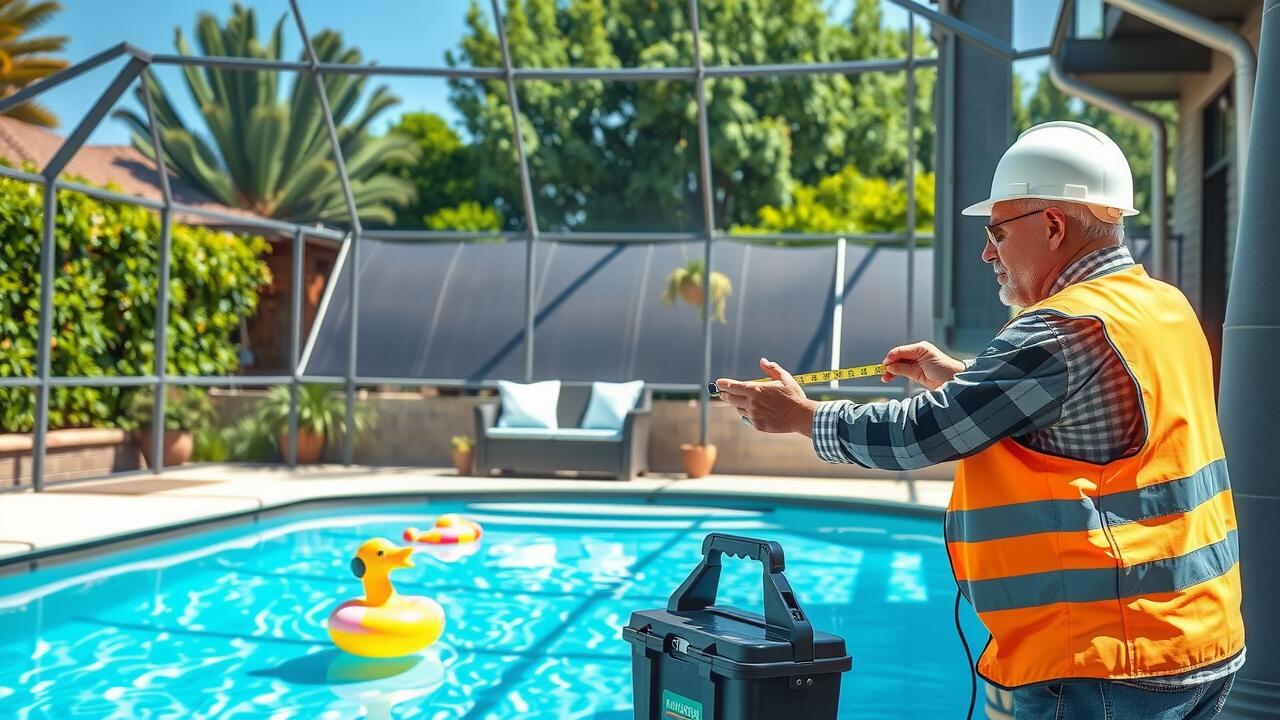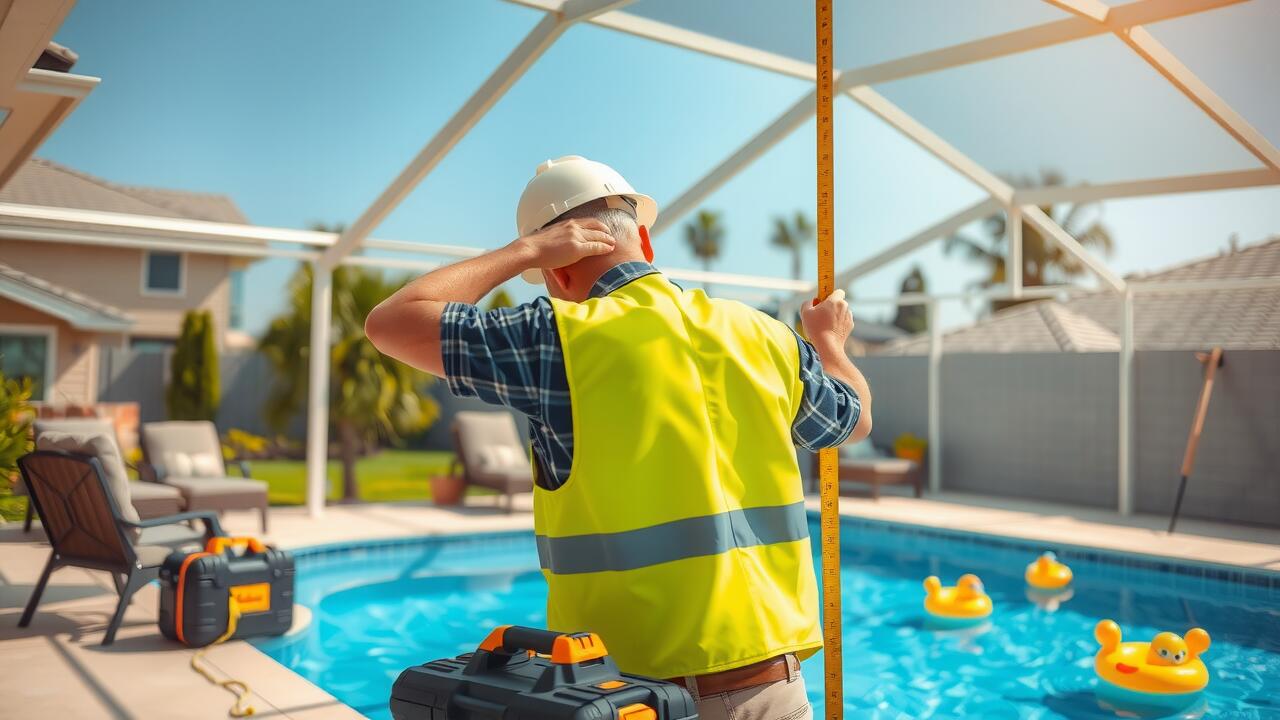
The Role of Sunlight Exposure
Sunlight exposure plays a crucial role in maintaining the warmth of pools. When pool enclosures are in place, they can significantly enhance the amount of sunlight that reaches the water. This natural heating can help raise the pool temperature during the daytime, especially when the enclosures are designed with transparent materials that allow maximum light penetration. Additionally, the greenhouse effect created by these structures can trap heat, further contributing to a warmer pool environment.
In areas with prolonged periods of sunlight, pool enclosures can be particularly beneficial. They not only shield the pool from debris and environmental factors but also create a more stable temperature by reducing heat loss during cooler nights. By optimizing sunlight exposure, pool enclosures help extend the swimming season while providing a more enjoyable experience for users.
Maximizing Natural Heating
Pool enclosures serve a vital function in utilizing the sun’s natural warmth to elevate water temperatures. By trapping sunlight, they create a greenhouse effect that can heat the air inside the enclosure significantly. This retained warmth, in turn, can help raise the temperature of the pool water more efficiently than if the pool were left exposed to the elements. The placement and orientation of the enclosure impact how much sunlight it captures throughout the day, making strategic positioning essential for maximizing solar gain.
Additionally, pool enclosures help to reduce heat loss during cooler evenings and on windy days. By blocking winds and limiting evaporation, they maintain a more stable water temperature, resulting in a more comfortable swimming experience. The combination of enhanced sunlight exposure and reduced heat loss makes pool enclosures an effective solution for those looking to enjoy warmer pool temperatures with less reliance on traditional heating systems. This can lead to a more enjoyable swimming season overall.
Energy Efficiency of Pool Enclosures
Pool enclosures play a significant role in enhancing the energy efficiency of swimming pools. By creating a barrier between the water and the external environment, these structures minimize heat loss, particularly during cooler evenings and windy days. The trapped heat from the sun can maintain a more stable water temperature, reducing the reliance on heaters. This natural insulation helps to preserve warmth, allowing pool owners to enjoy their pools at a comfortable temperature for longer periods.
In addition to retaining heat, pool enclosures often lead to lower energy costs. With decreased evaporation rates, less energy is required for heating the water, which can result in reduced utility bills. Moreover, efficient thermal management allows for more effective use of any heating systems in place, further optimizing energy consumption. Pool enclosures not only contribute to a pleasant swimming experience but also enhance overall cost-effectiveness for pool maintenance.
Reducing Heating Costs
Pool enclosures act as an effective barrier against heat loss, helping maintain the temperature of the water. By preventing wind exposure and minimizing evaporation, these structures allow the pool’s heating system to work more efficiently. When pool enclosures are utilized, less energy is required to keep the water warm, leading to a noticeable reduction in overall heating costs.
In addition to lowering energy usage, pool enclosures provide better insulation for the pool area. This insulation is especially beneficial during cooler months, as it prevents drastic temperature fluctuations. Homeowners can enjoy longer swimming seasons while spending less on heating and maintenance, making pool enclosures a cost-effective investment for both comfort and efficiency.
Maintenance Requirements
Pool enclosures require regular maintenance to function effectively over time. Leaves, debris, and dirt can accumulate on the structure and within the pool area. Cleaning the enclosure and surrounding area helps prevent any potential issues such as mold or algae growth. Inspecting seals and frames periodically ensures that the enclosure remains weather-tight and functional.
Additionally, checking for any signs of wear and tear is vital for the longevity of pool enclosures. Hinges and locks should be operational to maintain safety and security. Regular maintenance tasks can extend the life of the enclosure while also enhancing its performance. Keeping an eye on these aspects can contribute to an enjoyable swimming experience.
Ensuring Longevity and Performance
Regular maintenance is essential for ensuring the longevity and performance of pool enclosures. Routine inspections help identify any wear or damage that could compromise their effectiveness. Keeping the enclosure clean prevents buildup of debris, which can hinder sunlight exposure and reduce heating efficiency. Checking seals and fittings also contributes to maintaining an optimal environment around the pool.
In addition to upkeep, proper installation plays a significant role in the performance of pool enclosures. If an enclosure is not installed correctly, it may not provide the desired insulation or protection. Homeowners should consult with professionals to ensure that their enclosures are suited for their specific climate conditions and pool needs. Investing time and care into both maintenance and installation leads to a more effective and long-lasting pool enclosure experience.
FAQS
Do pool enclosures actually keep the water warm?
Yes, pool enclosures can help maintain warmer water temperatures by reducing heat loss due to evaporation and providing protection from wind and cold weather.
How does sunlight exposure affect the temperature of my pool?
Sunlight exposure plays a crucial role in warming your pool. Enclosures can maximize this effect by allowing sunlight in while limiting heat loss at night or during cooler days.
Can a pool enclosure save on heating costs?
Yes, by minimizing heat loss and allowing for natural heating from the sun, pool enclosures can significantly reduce heating costs, making your pool more energy-efficient.
What kind of maintenance do pool enclosures require?
Regular maintenance for pool enclosures typically includes cleaning the panels, checking for damages, and ensuring that hinges and locks function properly to maintain their effectiveness.
Will a pool enclosure work in colder climates?
While pool enclosures can help retain heat in colder climates, their effectiveness may vary based on the amount of sunlight available and the specific design of the enclosure.
